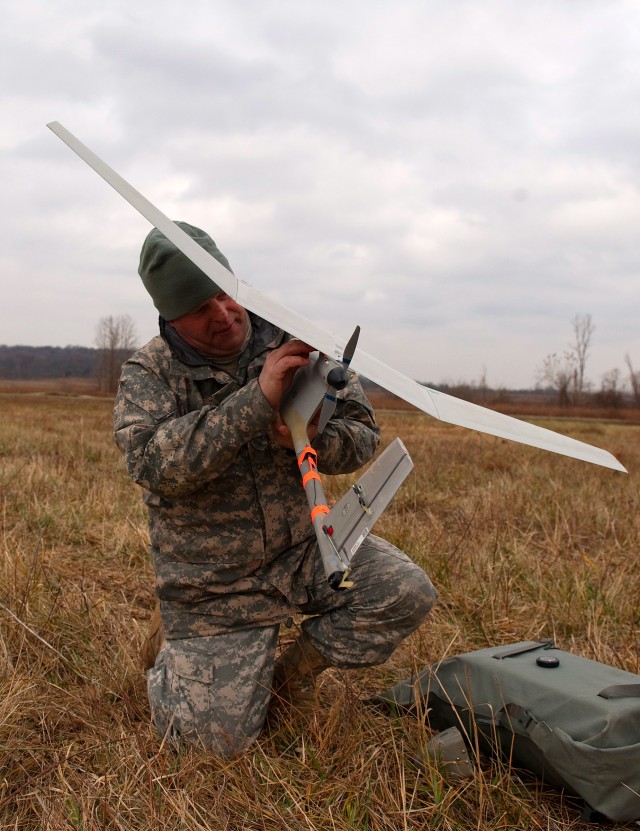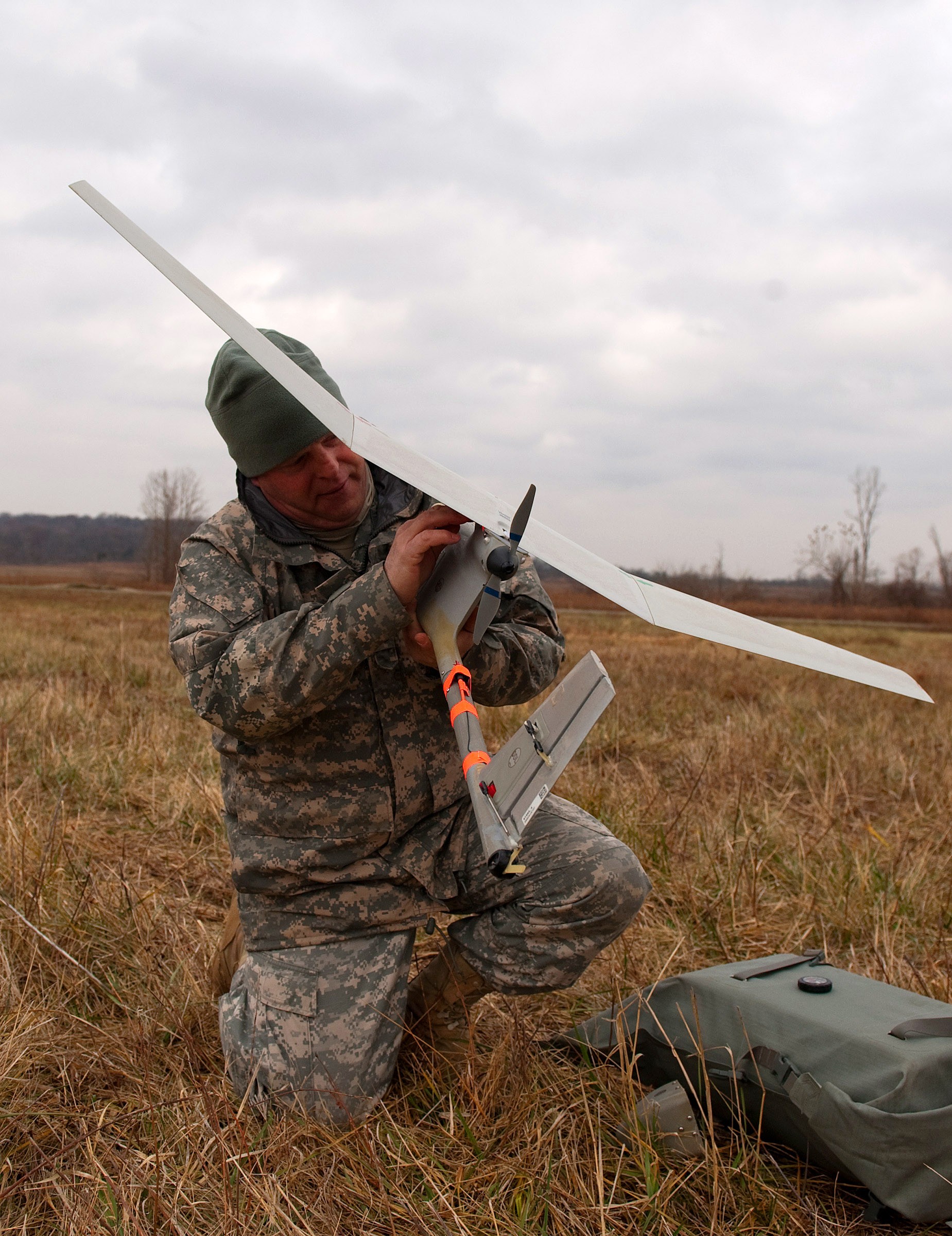
CAMP ATTERBURY JOINT MANEUVER TRAINING CENTER, Ind. (Army News Service, Nov. 26, 2010) -- In May, the Army marked over one million flight hours on unmanned aerial systems. At Camp Atterbury, Soldiers are training now to operate the Raven UAS and will add to that Army milestone next year when they fly missions over Afghanistan.
Weighing in at a mere 4.5 pounds, the Raven is one of the smallest vehicles in the Army, but its value to commanders on the battlefield is disproportionate to its size.
Soldiers from the Ohio National Guard's 37th Infantry Brigade Combat Team were at Camp Atterbury Joint Maneuver Training Center this month for a certification course on the Raven.
The Raven is a small, rucksack-portable aircraft that can be deployed by a two-Soldier team. It allows units to conduct intelligence, surveillance and reconnaissance of danger zones without committing Soldiers.
The UAS has been in service with the Army for the past five years. Today, approximately 15,000 systems are in use, said Aaron Aamold, a Raven system trainer.
"It is a hand-launched system, so it doesn't need a catapult for takeoff or a net for recovery," he said. "You can launch it from any relatively open area."
He said a good team can have the system ready to use in just over seven minutes. Soldiers pilot the vehicle using a controller similar to a hand-held video game system.
"The plane has a flying time of 60 to 90 minutes and can reach altitudes of 10,000 feet," said Aamold. "It has a cruising speed of 26 knots and will not let you do anything to crash due to stalling the engine."
The plane is designed to break apart during landing; much like a race car sheds its structure during a crash.
"My first thought when I started to put it together was not to break it," said Spc. Tariq Simms, of Cleveland, with A Company, 237th Brigade Support Battalion. "It looks fragile, but it's not."
The Raven is used for intelligence, surveillance and reconnaissance purposes, said Ammold.
"Soldiers in the field can utilize the Raven as needed to gather intelligence without having to call for support," he said.
The aircraft can carry either a color or an infrared camera. Both cameras have multiple levels of zoom and typically operate between 150 and 300 feet above the ground, said Simms.
"The best part of the training was following vehicles. For training, we're flying at 600 feet and following vehicles that have no idea they are being trailed," he said.
The ten-day training certifies the Soldiers as Raven operators. Once certified, the Soldiers will continue training by conducting intelligence-gathering operations with the Raven.
"Atterbury is good place for this training," said Aamold, "There are a number of mock villages in some inaccessible areas. We're having them locate these buildings with drones."
The 37th Infantry Brigade Combat Team is scheduled for a deployment to Afghanistan next year, where they are expecting to rely on the Raven.
(Staff Sgt. David Bruce writes for Camp Atterbury Public Affairs)

Social Sharing